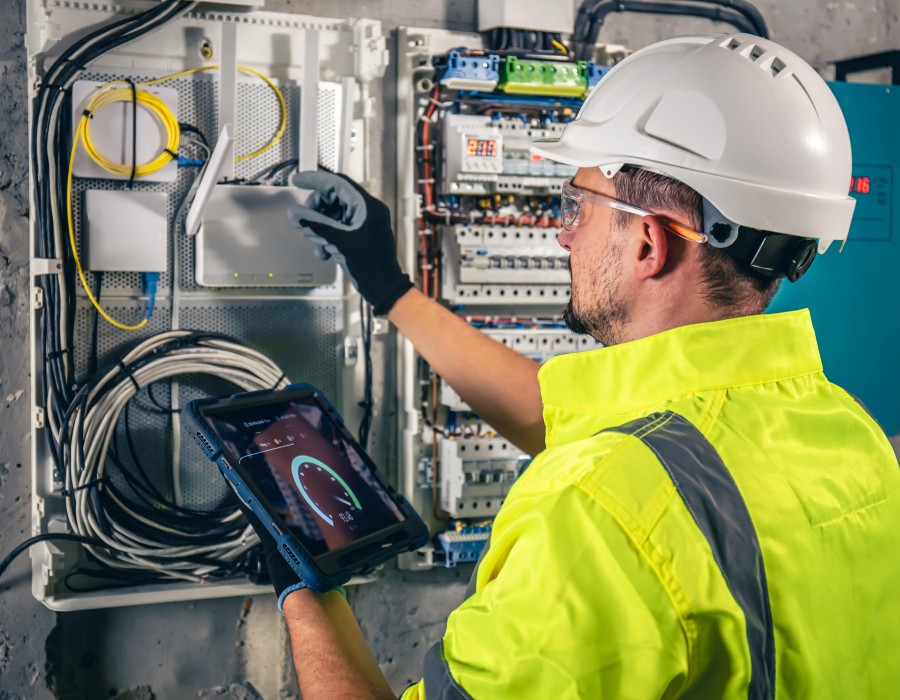Protecting delicate electronic equipment from the environment is a basic requirement in the field of electrical infrastructure. Electrical enclosures are like steadfast protectors, keeping out dust, moisture, extremes in temperature, and physical damage to electronic components. Having a thorough understanding of both indoor and outdoor electrical enclosures is essential for implementing customized protective measures. Come along on a comprehensive exploration to discover the intricacies, features, and diverse uses of these important gadgets.
Electrical Indoor Enclosures: Enabling Protection within Controlled Environments
Architectural marvels and electrical indoor enclosures are painstakingly built to protect delicate electronic equipment inside controlled indoor conditions. These enclosures, which are made of durable materials like steel, aluminum, or specialty polymers, provide protection from dust, moisture, and accidental touch. Their main goal is to protect fragile electrical parts, such as servers, networking hardware, control panels, and delicate instruments. Numerous industries, including data centers, control rooms, industrial plants, retail stores, labs, and healthcare facilities, use these indoor guardians extensively.
Features and Considerations for Electrical Indoor Enclosures
A careful analysis of many different aspects is required when choosing an indoor enclosure. An extensive range of factors are taken into account, including accessibility features, thermal management systems, material composition, and ingress protection (IP) rating. The risk of overheating is reduced and enclosed electronics operate at their best when enclosures with sophisticated thermal management features, including fans, ventilation, or climate control mechanisms, are installed. Furthermore, to guarantee equipment functionality and ease of management, it is essential to have sturdy locking mechanisms, flexible cable management solutions, configurable configurations, and easy accessibility for maintenance.
Electrical Outdoor Enclosures: Enduring Defense Against Harsh Environments
Electrical exterior enclosures, on the other hand, are designed to endure the harsh challenges presented by the external environment. These enclosures, which are made of durable materials like aluminum, stainless steel, or specific UV-resistant polymers, offer dependable protection for electronics against adverse weather conditions, UV rays, high temperatures, and other environmental challenges. In the telecommunications, utilities, transportation, industrial, oil and gas, renewable energy, and diverse outdoor applications that require long-lasting, weather-resistant electronics fortification, they act as steadfast defenders.
Features and Considerations for Electrical Outdoor Enclosures
Selecting outside enclosures requires a thorough analysis of the environmental challenges and the requirements of the intended use. Enclosures with higher IP ratings provide better ingress protection against dust and water infiltration, extending the life of equipment in harsh outdoor environments. In order to guarantee the best possible performance, robustness, and dependability in outdoor situations, sophisticated features such as integrated heating or cooling systems, sun shields, corrosion-resistant coatings, strong locking mechanisms, ventilations, and compliance with industry standards are essential.
Applications and Use Cases
Electrical enclosures are widely used in many different industries and applications. Control panels, servers, networking hardware, and delicate electronics are housed in electrical indoor enclosures in settings where regulated conditions are critical. On the other hand, in difficult external environments, electrical outdoor enclosures protect vital equipment such as power distribution units, communication devices, electrical controllers, and instruments. Their adaptability can be seen in a variety of outdoor structures that require strong electronic security, including as telecommunications towers, transportation infrastructure, industrial sites, oil and gas facilities, and renewable energy installations.
Conclusion: Elevating Equipment Protection to New Heights
To sum up, electrical enclosures play an unmatched role in protecting the performance and integrity of electronic devices. Outside enclosures safeguard equipment from a variety of external factors, whereas internal enclosures guarantee protection within controlled surroundings. The careful selection of enclosures, based on environmental factors, material durability, size, additional features, and industry standard compliance, is critical to guaranteeing stable and long-lasting protection for electronics housed within, promoting long-term operational reliability.




.jpg)

Comments